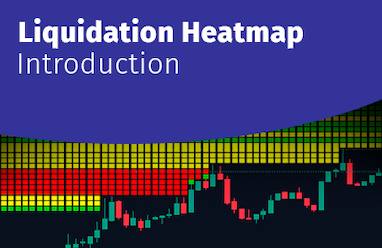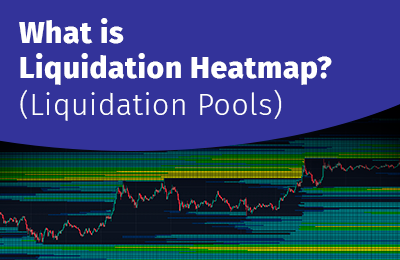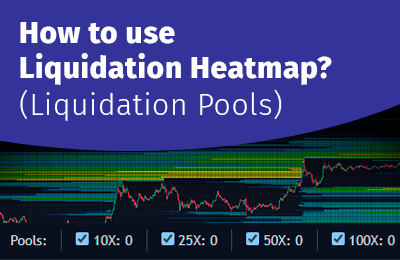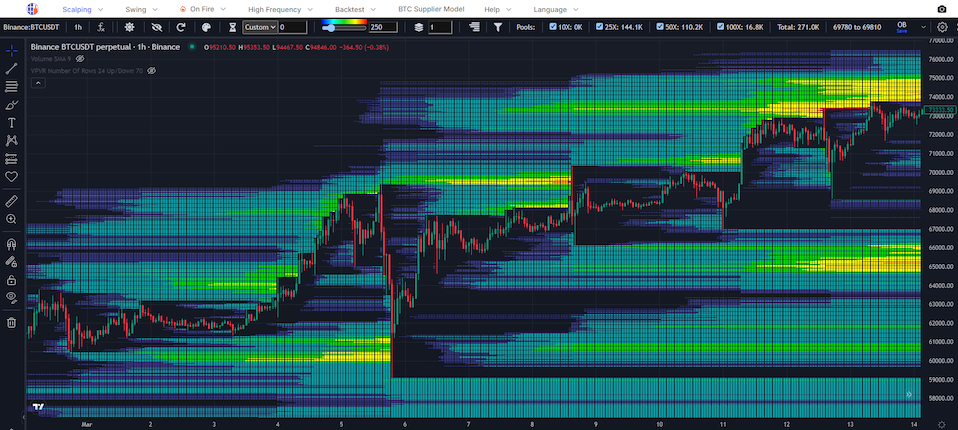Liquidation Heatmap: Bitcoin, Altcoins, Gold, Forex, ETF and Stocks
Open chartThe colored areas that can be seen in the graph are the Liquidation Pools, also known as Liquidation Heatmap, where the liquidity within the market is represented with a heat map, which work as a magnet for the price.
Liquidation Heatmap - Hyperliquid DEX
This chart shows the actual liquidation points on Hyperliquid, which, being a decentralized exchange (DEX), allows users to see and analyze the real positions of all traders with up to 40x leverage.
-
BTC/USDT
Bitcoin
-
ETH/USDT
Ethereum
-
ADA/USDT
Cardano
-
AVAX/USDT
Avalanche
-
BNB/USDT
Binance Coin
-
DOGE/USDT
Dogecoin
-
DOT/USDT
Polkadot
-
POL/USDT
Polygon
-
TRX/USDT
Tron
-
XRP/USDT
Ripple
-
SOL/USDT
Solana
-
PEPE/USDT
PEPE
-
SUI/USDT
SUI
-
LINK/USDT
CHAINLINK
-
HBAR/USDT
HEDERA
-
XMR/USDT
MONERO
-
LTC/USDT
LITECOIN
-
KAS/USDT
KASPA
-
XLM/USDT
STELLAR
-
TON/USDT
TONCOIN
-
ZEC/USDT
ZCASH
-
APT/USDT
APTOS
-
HYPE/USDT
HYPERLIQUIDFree
-
BTC/USDT
Bitcoin
-
ETH/USDT
Ethereum
-
ADA/USDT
Cardano
-
AVAX/USDT
Avalanche
-
BNB/USDT
Binance Coin
-
DOGE/USDT
Dogecoin
-
DOT/USDT
Polkadot
-
POL/USDT
Polygon
-
TRX/USDT
Tron
-
XRP/USDT
Ripple
-
SOL/USDT
Solana
-
PEPE/USDT
PEPE
-
SUI/USDT
SUI
-
LINK/USDT
CHAINLINK
-
HBAR/USDT
HEDERA
-
XMR/USDT
MONERO
-
LTC/USDT
LITECOIN
-
KAS/USDT
KASPA
-
XLM/USDT
STELLAR
-
TON/USDT
TONCOIN
-
ZEC/USDT
ZCASH
-
APT/USDT
APTOS
Liquidation Heatmap - Hyperliquid DEX
This chart shows the actual liquidation points on Hyperliquid, which, being a decentralized exchange (DEX), allows users to see and analyze the real positions of all traders with up to 40x leverage.
Liquidation Heatmap - Hyperliquid DEX
This chart shows the actual liquidation points on Hyperliquid, which, being a decentralized exchange (DEX), allows users to see and analyze the real positions of all traders with up to 40x leverage.
Liquidation Heatmap - Hyperliquid DEX
This chart shows the actual liquidation points on Hyperliquid, which, being a decentralized exchange (DEX), allows users to see and analyze the real positions of all traders with up to 40x leverage.
Liquidation Heatmap - Hyperliquid DEX
This chart shows the actual liquidation points on Hyperliquid, which, being a decentralized exchange (DEX), allows users to see and analyze the real positions of all traders with up to 40x leverage.
Liquidation Heatmap - Hyperliquid DEX
This chart shows the actual liquidation points on Hyperliquid, which, being a decentralized exchange (DEX), allows users to see and analyze the real positions of all traders with up to 40x leverage.
Liquidation Heatmap - Hyperliquid DEX
This chart shows the actual liquidation points on Hyperliquid, which, being a decentralized exchange (DEX), allows users to see and analyze the real positions of all traders with up to 40x leverage.
Liquidation Heatmap - Hyperliquid DEX
This chart shows the actual liquidation points on Hyperliquid, which, being a decentralized exchange (DEX), allows users to see and analyze the real positions of all traders with up to 40x leverage.
-
Anticipate the trend
- Algorithm that shows where the price would be most likely to go, forced by high frequency bots.
-
Know the bounce zones
- When the price moves towards the Pools, it liquidates the positions and ends up bouncing.
-
Optimize your operations
- Knowing this allows us to buy at minimum prices and sell at maximum prices.
-
Reduce your losses
- We know where most traders are going to lose, therefore we can identify a better area to place our stop losses.
-
Improve your vision of the market
- They are like X-Rays in the graph that allows to identify the market manipulation.
-
Intuitive graphics
- TradingView's like interface.
How does the Liquidation Heatmap work?
The Liquidation Heatmap from Trading Different is powered by a proprietary algorithm that processes real-time data from multiple liquidity providers and institutional-grade data sources. This allows us to generate a weighted average of all trades entering the market, avoiding reliance on a single source.
Using this aggregated data, the algorithm estimates the likely liquidation levels of open positions. While we don’t have exact information about the leverage used in each trade, our model applies advanced statistical and risk modeling techniques, developed and refined over more than 7 years of live performance across markets such as crypto, stocks, indices, and forex.
Thanks to this statistical approach, the Liquidation Heatmap has proven to be highly effective in identifying pressure zones in the market—areas where sudden moves are more likely due to forced liquidations.
Videos




